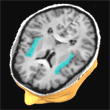Tuesday, 27 May 2014
The Variety and Structural Complexity of Neurons
 The purpose of most of the posts in this blog is to summarize recent studies in the cognitive sciences and attempt to make them more accessible—in particular by providing links to selected pages on this website. But the purpose of some of the other posts is simply to draw attention to existing resources on various aspects of neuroscience. Today’s post falls in the latter category. It deals with the neuron and the work by Kristen Harris and her colleagues to reveal it in all its complexity (see the first two links below). (more…)
The purpose of most of the posts in this blog is to summarize recent studies in the cognitive sciences and attempt to make them more accessible—in particular by providing links to selected pages on this website. But the purpose of some of the other posts is simply to draw attention to existing resources on various aspects of neuroscience. Today’s post falls in the latter category. It deals with the neuron and the work by Kristen Harris and her colleagues to reveal it in all its complexity (see the first two links below). (more…)
From the Simple to the Complex | Comments Closed
Monday, 12 May 2014
We May Be Able To Have Feelings Without an Insula

The insula is a brain structure that lies deep inside the cerebral cortex and so is less accessible for examination. That is why so little was known about the insula for so long, until neurobiologists such as Antonio Damasio demonstrated its role in many human feelings. Because the insula receives so many signals from the strong internal bodily reactions associated with even our slightest emotions, it was seen as perfectly positioned to make us aware of these reactions.
That is what Damasio says in a February 2013 article in the journal Nature Reviews Neuroscience, in which he goes on to say that the role of the insula in generating our feelings may be more limited than some might believe. He points out several observations that are not highly consistent with the strong thesis that the insula is the essential platform for human emotions, and, by extension, for human consciousness, which develops from them. (more…)
Emotions and the Brain | Comments Closed







